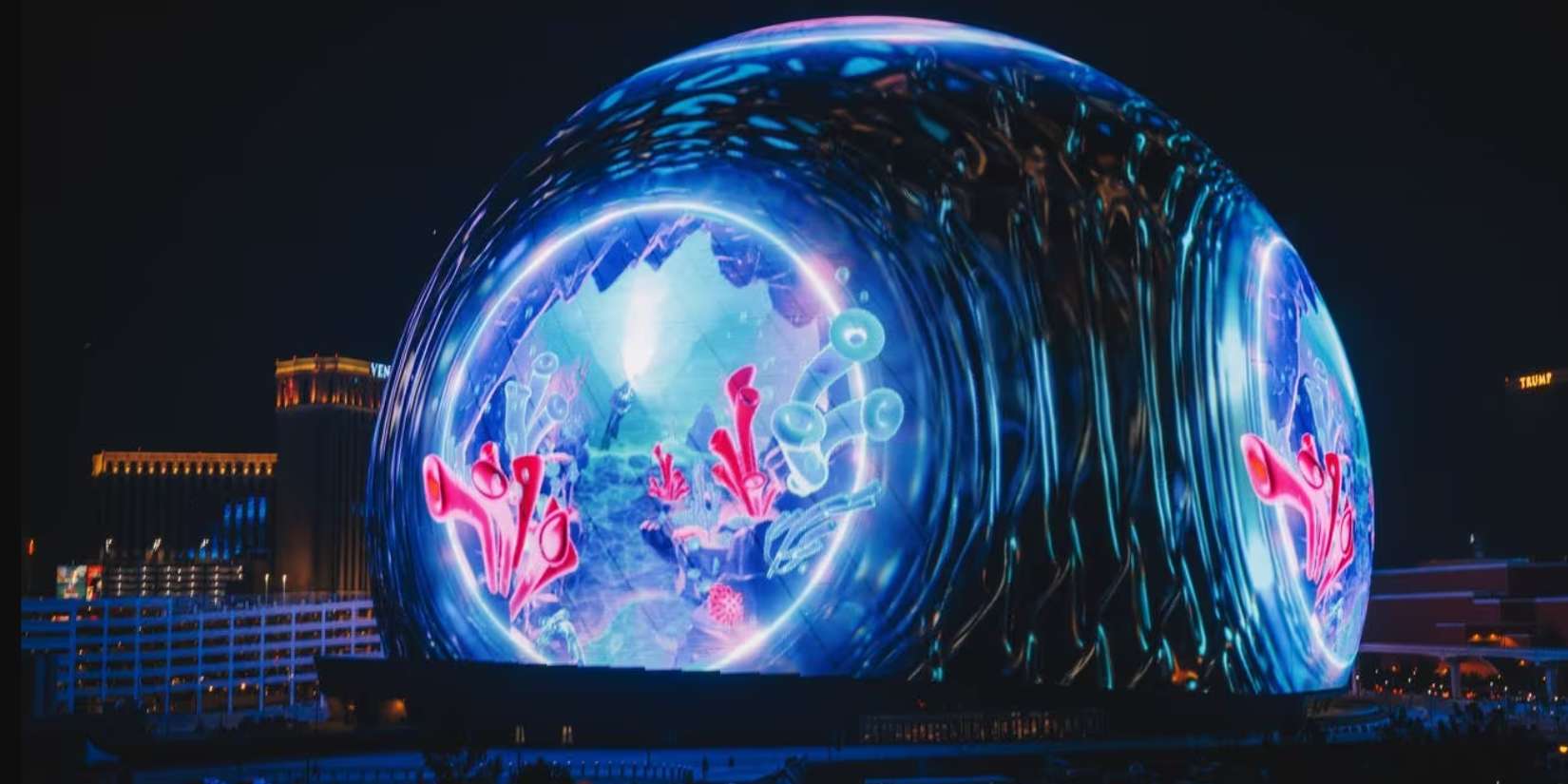Las Vegas, known for its dazzling lights and extravagant shows, has raised the bar even higher with the construction of The Sphere. This monumental dome, a triumph of modern architecture and technology, amazes visitors.
The technology behind the miracle
The Sphere in Las Vegas is an impressive example of the combination of architecture and high-tech. As the world’s largest spherical building with a height of 366 feet and a width of 516 feet, it offers space for up to 20,000 people. The outer shell is equipped with a 580,000 square foot programmable LED display capable of displaying 256 million colors. The structure itself weighs about 13,000 tons and has a surface area of 220,000 square feet, supported by a steel frame that was transported by a huge crane.
Inside the Sphere is a high-resolution media screen, reminiscent of a planetarium, which covers an area the size of about four soccer pitches. This screen has even more programmable LEDs set at a resolution of 16Kx16K – far beyond the commercially available 8K.
For the acoustic part, there are 168,000 speakers that create a realistic and immersive surround sound. Thanks to the spherical shape of the room, sound dispersion is reduced so that almost every seat experiences the same audio quality. In addition, 10,000 seats are equipped with an infrasonic haptic system that transmits the lowest bass levels through your seat or feet, so you can not only hear the sound, but also feel it. Environmental effects such as scents, temperature changes and wind are also used to enhance the experience.
The Sphere also uses advanced technologies such as Snell’s law for guiding light through the lenses of its immersive cameras, Fanger’s equation for predicting temperature changes and the Venturi effect for its 4D wind effects. These technologies make it possible to create impressive, atmospheric effects in the theater.
In addition, the building is equipped with a Wi-Fi system that provides 1,100 access points and delivers 25 megabits per second to enable interactive events and general convenience.
The Sphere is primarily a venue for concerts, award ceremonies, cinema and sporting events and is intended to offer immersive, multi-sensory experiences that are unique in this form. Artists have the opportunity to use this space in an open way to connect with the audience in new ways.
A new era of immersion
Immersion in the Sphere is achieved through a combination of visual and acoustic elements that blur the boundaries between reality and fiction. Visitors experience a captivating depiction of the Earth that emphasizes the beauty of our planet through its impressive landscapes and landmarks.
The future for companies
The Sphere could be a role model for companies looking for innovative ways to get their message across. In a world where audiences are constantly looking for new, immersive experiences, such immersive technologies could become the norm for presentations, conferences and promotional events.
The Sphere for at home – with virtual reality
Bringing the experience of the Sphere in Las Vegas home is possible with virtual reality (VR), albeit with a few differences. Here are some aspects of how you can create a similar experience with VR technology:
- Immersive visuals: Modern VR headsets offer high-resolution displays that enable deep immersion in virtual worlds. Although they do not reach the enormous size and resolution of the Sphere screen, they can still offer a convincing visual experience.
- Spatial sound: High-quality VR headsets have integrated headphones or support external audio solutions that offer spatial sound. This 3D audio effect can help create an immersive sound experience, similar to what is achieved in the Sphere with its multiple speakers.
- Haptic feedback: Some VR systems offer haptic feedback through controllers or special vests. These devices can simulate vibrations and movements to make the experience physically tangible, similar to the haptic seats in the Sphere.
- Interactivity: VR offers the opportunity to interact with the virtual environment, which is not possible in a static environment such as the Sphere. Users can manipulate objects, navigate through virtual worlds and interact with other people in real time.
- Content: To have a similar experience to the Sphere at home, you need appropriate content. These can be VR films, concerts, games or other interactive experiences. Some content could be developed specifically for VR in order to fully exploit the possibilities of the technology.
- Accessibility: While visiting the Sphere requires a trip to Las Vegas, VR offers the opportunity to enjoy similar experiences from home. This makes high-quality entertainment more accessible to a wider audience.
It is important to note that VR technology, while impressive, cannot yet match the full level of immersive experience of the Sphere, particularly in terms of the size of the screen and the complexity of the audio and haptic systems. Nevertheless, it offers a fascinating alternative for enjoying similar experiences in a more personal setting.
Conclusion
The Sphere in Las Vegas is more than just an entertainment venue; it is a symbol of the interplay of technology, art and human experience in immersive worlds. A place where the limits of what is possible are redefined.
